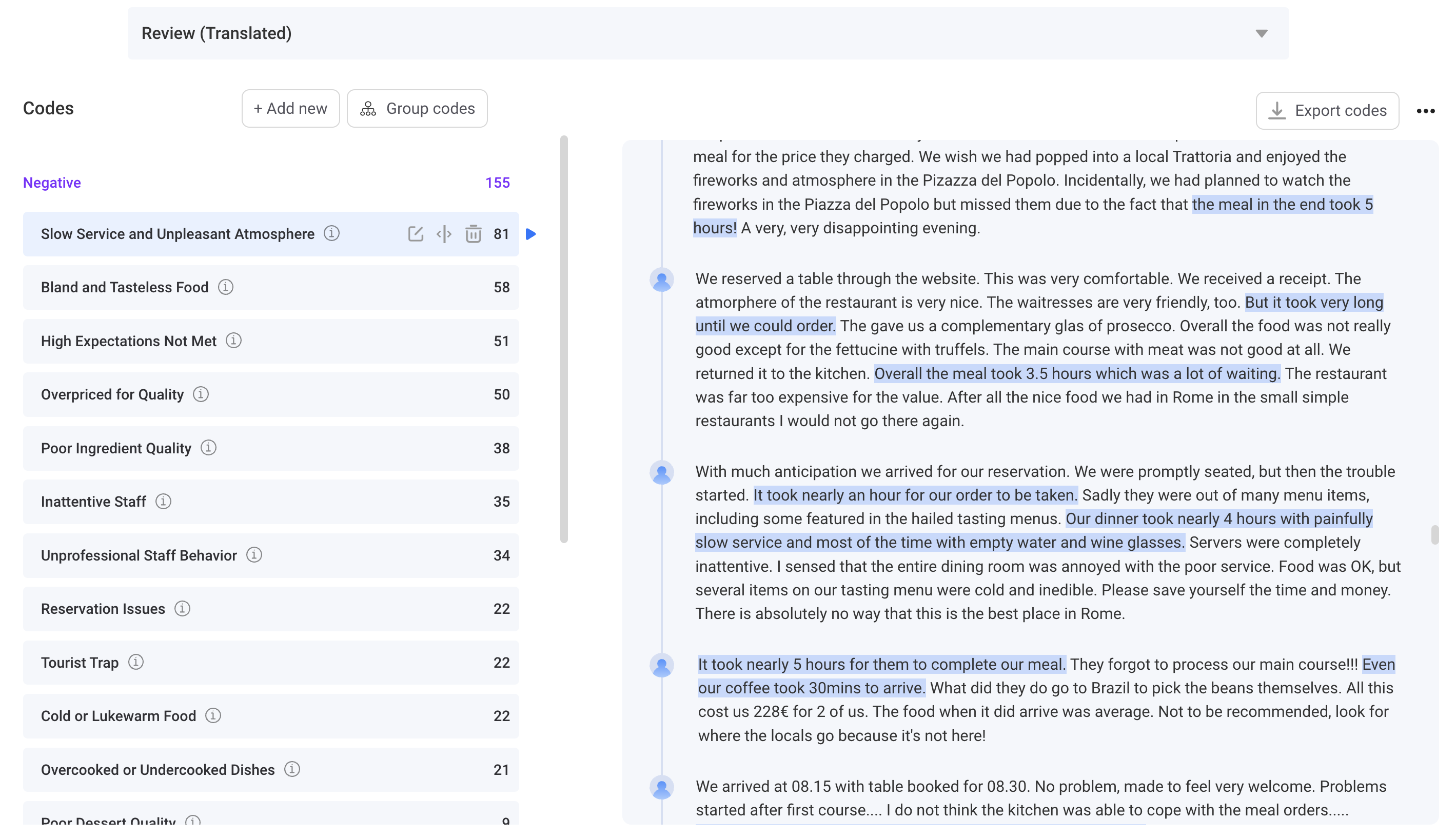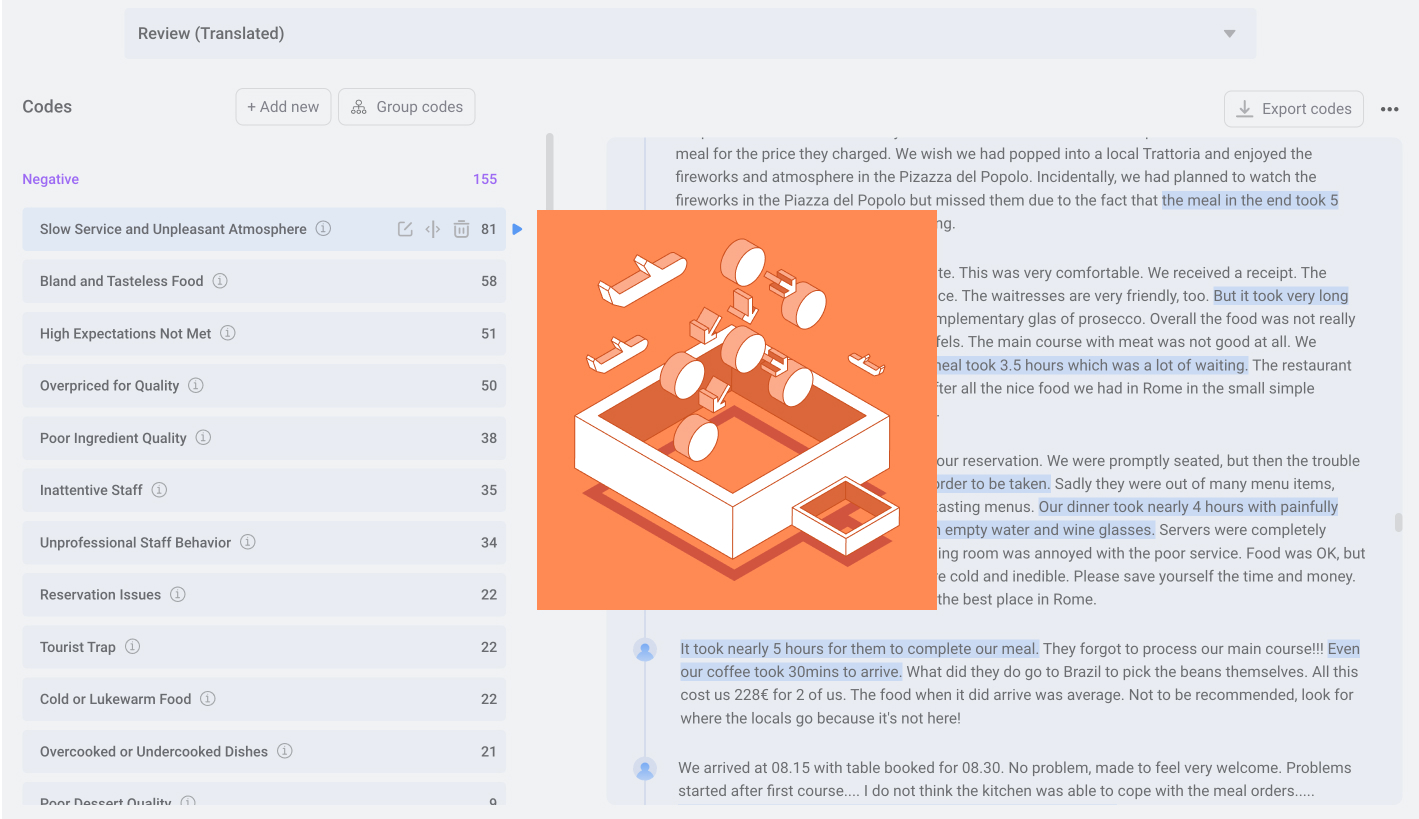Analyzing qualitative survey data can be a nightmare. If you’ve ever worked with open-ended survey responses, you know how time-consuming and tedious the process can be. Manually coding thousands of responses into meaningful themes or codes can take days, if not weeks, to complete. But with AI, this process can be shortened dramatically—what once took days can now be done in just minutes.
The Nightmare of Coding Qualitative Survey Data/Verbatim
The traditional way of analyzing qualitative survey data manually leads to significant inefficiency and often lower-quality codes due to human limitations and errors.
- Large Volume of Responses: For many surveys, it’s not uncommon to receive thousands of open-ended responses. Imagine the time it takes to read through and synthesize each response, then manually count how many times each theme or code appears. For instance, one of our clients used to spend almost a week coding three open-ended questions, each with 500 respondents.
- Mixed-Language Responses: Another challenge is language diversity. Surveys often include responses in multiple languages, making the process even more time-consuming. Translating and coding each response by hand can add significant delays.
- Human Limitations: It’s not just about the time involved. The sheer volume of data makes it difficult for humans to produce consistently high-quality codes. When working manually, especially with large datasets, there’s always the risk of missing key insights, leading to lower-quality outcomes. There’s only so much that people can handle, and errors or oversights are inevitable.
How AI Can Revolutionize Qualitative Survey Data/Verbatim Analysis
- AI Can Generate Codes in Seconds: Instead of spending days manually coding responses, AI can analyze thousands of responses and summarize them into high-quality codes or themes in a matter of seconds.
- Instant Language Translation: AI can handle mixed-language responses with ease. Before generating codes, AI can instantly translate all responses into English, allowing for a seamless coding process. This eliminates the need for manual translation, speeding up the entire workflow.
- AI-Driven Code Attribution: AI can not only generate these codes but also count the number of responses relevant to each code. This eliminates the manual task of tallying responses, giving you instant visibility into the frequency and weight of each theme. AI can go even further by identifying specific quotes or highlighting key sentences and phrases from each response, linking them directly to the relevant code. This makes it easier to extract impactful insights and ensures that nothing gets missed in the coding process.
Additionally, platforms like BTInsights offer even more flexibility when it comes to survey coding. With the BTI platform, you can split, combine, and group codes with ease, adapting the analysis as you dig deeper into the data. You can also export the data in various formats.

AI survey open-ends analysis with exceptional accuracy
Let AI generate codes or use your own codebook

